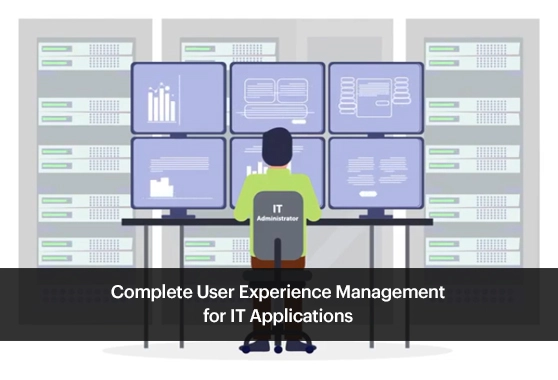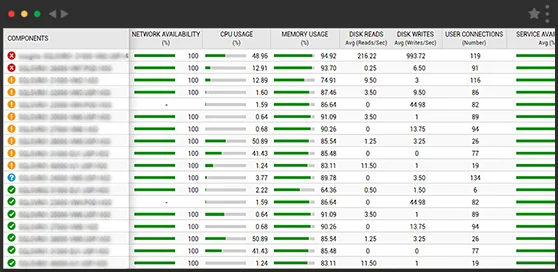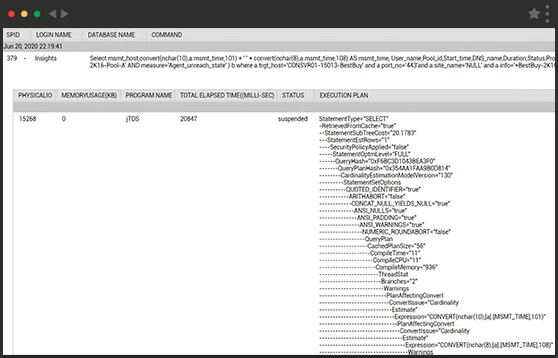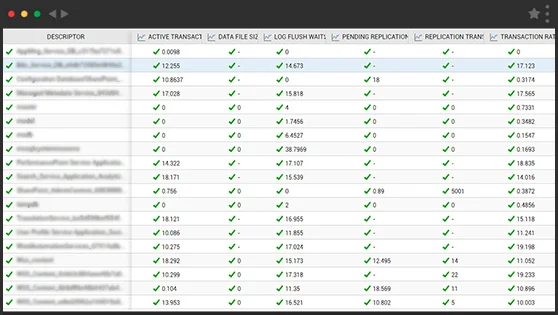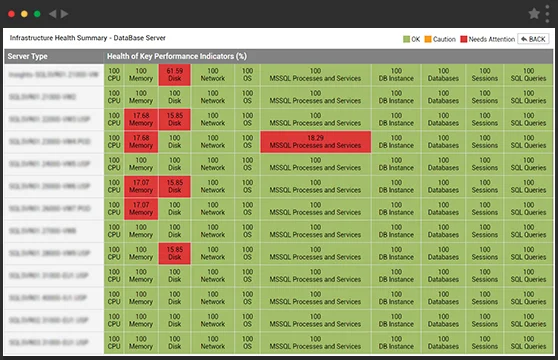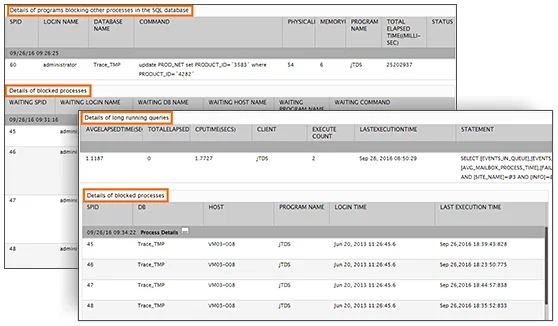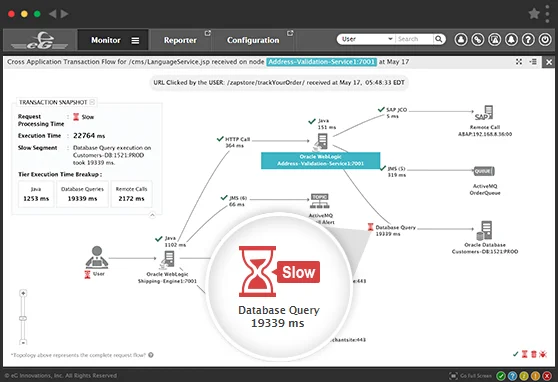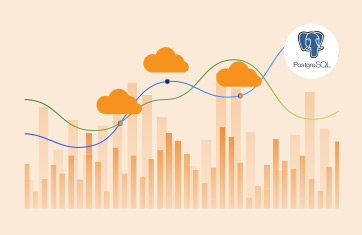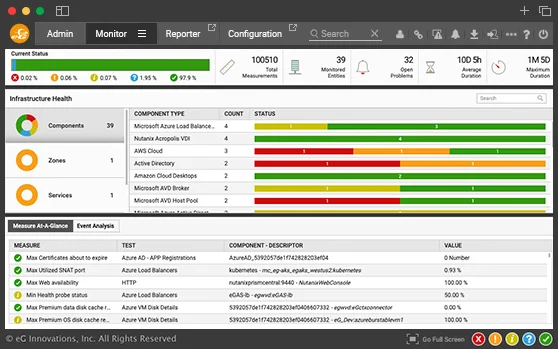SQL Server Monitoring

Slow database problems are at the heart of most application issues. Leverage Microsoft SQL server performance monitoring to identify whether it is a slow query, improper configuration, or the need for index tuning.
Proactive monitoring
of Microsoft SQL server
According to a recent Explore Group survey, Microsoft SQL server is one of the top database servers in use today. Services in most industries - healthcare, manufacturing, finance and more - rely on SQL database servers for data storage and access. Any performance degradation or unavailability of these servers can severely impact the performance of the entire service, often causing customer dissatisfaction and lost revenue. To prevent such situations, database administrators are tasked with making sure that their database servers are tuned well and responding as fast as possible to application requests. SQL performance monitoring can help database administrators:
- Proactively detecting problems before they become user complaints;
- Accurately diagnosing the cause of slowdowns: Utilize SQL server monitoring for queries to identify poor queries. Point out missing indexes, insufficient memory, or storage latency.
- Identify areas where the database subsystem can be optimized to deliver better performance to the application
Troubleshoot slow database
queries with detailed analytics
- Monitor transactions to all the databases on a server
- Identify top queries by I/O activities, CPU usage, memory usage
- See execution plan for slow queries
- Identify which queries are executing for a long time; highlight user name, application and query
- Track missing and unused indexes and identify ways to optimize the database for best performance
- Monitor fragmentation level of database tables and indexes, and be proactively alerted to situations when online/offline tuning of the database is required
Get comprehensive insights into database space usage and file activity
- Monitor space usage by file groups; determine when the free space in a file group drops below acceptable limits
- Track usage of the tempDB; determine if it is running out of space
- Monitor the transaction logs of each of the databases. Report on databases that are using excessive transaction log space. Alert when a transaction log is reaching the maximum configured size limit.
- Be notified when reserved space, data space and index space utilization of any database is nearing capacity
- Track activity of each of the data files. Monitor I/O stalls on the data files. Identify if the I/O activity is not balanced across all data files and if additional data files are required to balance the I/O activity
Please Click here to check the list of supported SQL server configuration. |
eG Enterprise has been incredibly useful and has far exceeded our expectations. Metrics relating to SQL and missing indexes have provided critical information that we had long suspected were performance issues. Now
we have the information to address specific performance challenges.
![]()
Monitor database
server health
Track the key parameters that can affect database server performance:
What Microsoft SQL monitoring with
eG Enterprise reveals
eG Enterprise, one of the most comprehensive MS SQL monitoring tools, automatically determines baselines for every metric collected in the IT infrastructure. The eG Microsoft SQL monitor provides proactive alerts to administrators. In-depth Microsoft SQL server monitoring also offers snapshots of the SQL server's usage periodically to assist with real-time and post-mortem diagnosis. Hourly, daily, and monthly trends are automatically computed, so administrators can effectively plan the utilization and capacity of their Microsoft SQL infrastructure.
| SQL Server Performance Monitoring | |
| SQL Server Engine Monitoring | |
| Lock Activity Monitoring | |
| SQL Database Performance Monitoring (Database Activity and Space Monitoring) | |
| SQL Memory Monitoring | |
| Operating System Monitoring |






